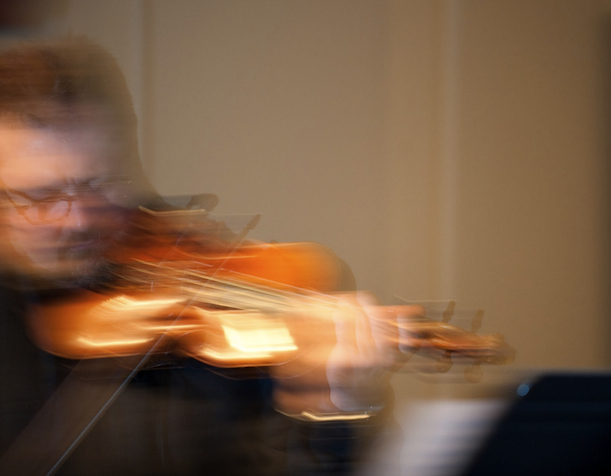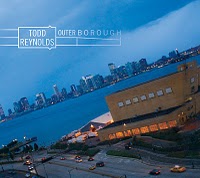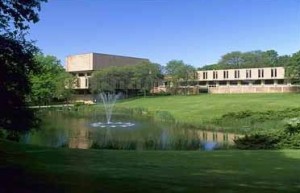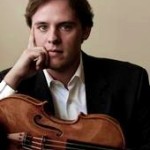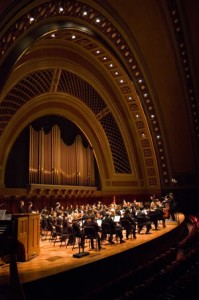 Despite driving snow and slippery roads, an eager crowd gathered Sunday evening to hear Michigan’s University Philharmonia Orchestra deliver eight world premiere performances of works by student composers. The concert is one of the most highly anticipated of the year and is a culmination not only for the student composers involved but also for the student conductors responsible for bringing their pieces to life. This year was even more special than most because all the pieces on the programs were Masters Degree theses from the 2011 class. This fact made the evening more of a watershed event than usual as it represented these composers’ first forays into the venerable land of orchestral writing and all the professional implications we associate with it.
Despite driving snow and slippery roads, an eager crowd gathered Sunday evening to hear Michigan’s University Philharmonia Orchestra deliver eight world premiere performances of works by student composers. The concert is one of the most highly anticipated of the year and is a culmination not only for the student composers involved but also for the student conductors responsible for bringing their pieces to life. This year was even more special than most because all the pieces on the programs were Masters Degree theses from the 2011 class. This fact made the evening more of a watershed event than usual as it represented these composers’ first forays into the venerable land of orchestral writing and all the professional implications we associate with it.
The music was consistently good throughout, which slightly surprised me because these works were many of the composers’ first attempts at handling a full orchestra. The pieces were also very individual, though it was possible to hear the history behind a few of them. Even though the connection some of the works had to the orchestral tradition did not affect my enjoyment of them, I must confess I found the more unique works more striking at the time. However, after a few days have passed and my initial reactions dissipated, it is clear this was an amazingly strong showing from a class of composers filled with distinct personalities and musical voices.
The evening began with Patrick Harlin’s Rapture, which he explained is, “not meant to invoke religious imagery…rather a state of extended bliss.” Mr. Harlin’s work fulfills his description with sustained periods of high energy bubbling with brief, repeated rhythmic-melodic packages embedded into a landscape of constantly shifting orchestral colors. Eventually, long lines emerge carrying the primary thematic material of the piece, but the energy level remains high most of the way through. Impressively, though Rapture careens through a narrow range of rhythms, Mr. Harlin avoids setting a groove or creating trite rhythmic parallelisms. Particularly towards the end of the, the phrasing is delightfully choppy and the orchestration shifts chaotically. To balance this out, Mr. Harlin makes the primary theme very clear, particularly leading into its final recurrence, which is signaled by a piccolo solo. In the end, Rapture comes across as both joyful and frenetic, and the work’s ebullient themes bounce across the orchestra like patrons of a wild amusement park ride.
Next was Donia Jarrar’s Border Crossings, which featured the composer on stage as a vocalist and narrator. The piece is overtly programmatic and deals with Ms. Jarrar’s experience as a young girl fleeing Kuwait after the Iraqi Army invaded the small Middle Eastern nation in August 1990. As one expects, Ms. Jarrar’s music references the setting of her story, but she is very intelligent about incorporating her allusions to the Middle East into the framework of the piece. The most striking example of this is the beginning where Ms. Jarrar sings over a drone of open fifths. The harmony changes but remains quintal until the strings land on an incredibly poignant major-seventh chord and the pattern of sparse accompaniment is broken. Border Crossings succeeds as a backdrop for Ms. Jarrar’s text, but it was her performance that rent the most hearts on Sunday night, nearly stealing the evening had it not been for the strength of the other pieces on the program.




